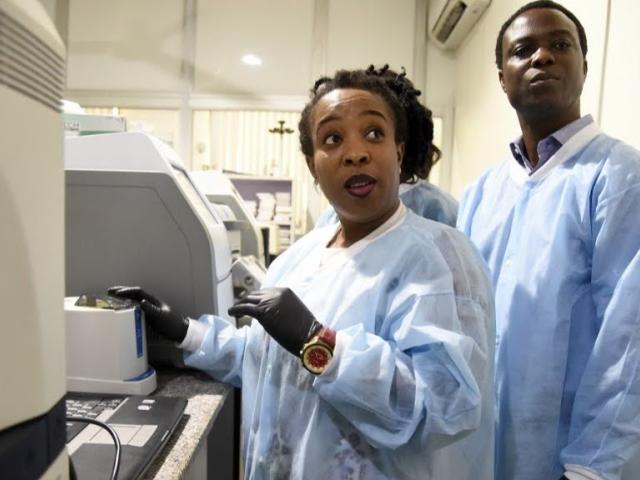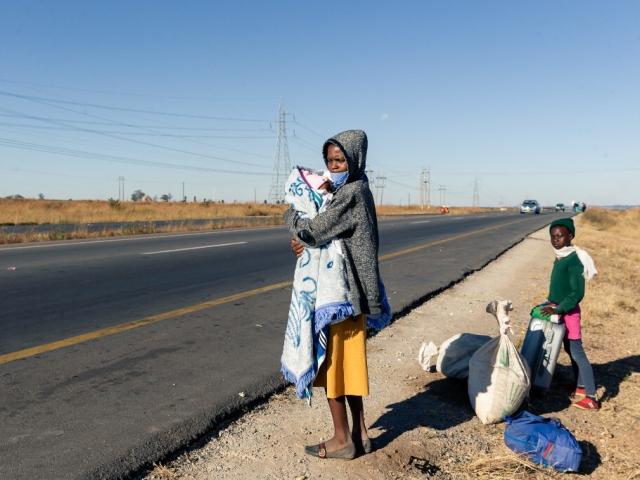The World Health Organization (WHO) has updated its global death estimates. Data is available for 183 countries for the years 2000, 2010, 2015 and 2019. It is categorised according to region, age, sex and cause of death.
The 10th outbreak of the Ebola virus in the Democratic Republic of the Congo made international headlines in 2019. The WHO declared it a “public health emergency of international concern” in July of that year.
This dataset is likely to be the last major update not to feature Covid-19 statistics. SARS‑CoV‑2, the virus that causes Covid-19, was formally identified in early 2020.
This factsheet is intended to aid accurate reporting and discussion on the leading causes of death in Africa.
7.8 million deaths
The United Nations estimated the continent’s 2019 population at close to 1.31 billion. That same year, some 7.8 million deaths were registered in the WHO’s Africa region. The region includes 47 of the continent’s 55 countries.
Deaths are categorised into three groups. Included in group 1 are communicable (or infectious) diseases, as well as maternal, newborn and nutritional conditions. Group 2 deaths are caused by non-communicable or chronic diseases and group 3 deaths are caused by injuries.
The WHO’s estimates are based on the latest available country information on deaths by place, time and cause. This is collected from death registration systems. The underlying causes of death are captured by the national authority.
In countries where this information isn’t available the WHO relies on data collection and modelling based on work of their own and a network of partner organisations.
Group 1: Communicable disease
Group 1 conditions are those that can be spread between people. These deaths are, in other words, because of communicable disease.
This category accounted for 4.1 million deaths (52.9%) in 2019. This was a decrease from 4.4 million deaths in 2015 (56.3%). Leading causes of death in this category included lower respiratory tract infections, diarrhoeal diseases, HIV/Aids, malaria and tuberculosis.
|
Group 1 causes of death in 2019 |
||
|
Cause of death |
Number of deaths |
Share of total deaths 2019 (2015) |
|
Lower respiratory tract infections |
774,252 |
9.9% (10.2) |
|
Diarrhoeal diseases |
496,278 |
6.4% (7.2) |
|
HIV/Aids |
434,543 |
5.6% (6.8) |
|
Malaria |
388,229 |
5.0% (5.4) |
|
Tuberculosis |
378,193 |
4.9% (5.1) |
Source: WHO
The primary cause of death in Africa remains communicable diseases, which can be prevented. This is the case in low-income countries the world over. Globally, non-communicable diseases are the leading cause of death, at 74% of all deaths.
Group 2: Non-communicable diseases
Non-communicable diseases are associated with urbanisation and higher standards of living. They accounted for 2.8 million deaths (37.1%) in 2019, up from 34.3% in 2015.
The leading causes of death in this category include ischaemic heart disease, stroke and cirrhosis of the liver.
|
Group 2 causes of death in 2019 |
||
|
Cause of death |
Number of deaths |
Share of total deaths 2019 |
|
Ischaemic heart disease |
429,179 |
5.5% (5) |
|
Stroke |
425,719 |
5.5% (5.1) |
|
Cirrhosis of the liver |
195,320 |
2.5% (2.4) |
|
Diabetes mellitus |
177,079 |
2.3% (2.1) |
|
Kidney diseases |
130,582 |
1.7% (1.6) |
Source: WHO
Group 3: Injuries
Group 3 consists entirely of injuries. There were 774,489 deaths in this group in 2019. They accounted for 9.9% of all deaths in the region, up from 9.4% in 2015.
There are two broad categories in this group. The first is “unintentional injuries” which accounted for 75% of the deaths. This included road injuries, falls, drowning and “other unintentional injuries”.
The second category is “intentional injuries” which includes interpersonal violence, self-harm and “collective violence and legal intervention”.
|
Group 3 causes of death in 2019 |
||
|
Cause of death |
Number of deaths |
Share of total deaths 2019 (2015) |
|
Road injuries |
297,087 |
3.8% (3.4) |
|
Other unintentional injuries |
111,137 |
1.4% (1.4) |
|
Interpersonal violence |
109,599 |
1.4% (1.3) |
|
Self-harm |
75,380 |
1.0% (0.9) |
|
Falls |
39,395 |
0.5% (0.5) |
Source: WHO
Africa’s top 5 causes of death
1. Lower respiratory tract infections
These infections affect people’s airways and lungs. They can be caused by different things, such as viruses and bacteria and occasionally fungi or parasites. The most common illnesses are bronchitis and pneumonia.
Lower respiratory tract infections were Africa’s leading cause of death in 2019. They have held this position since 2010. (Note: Tuberculosis is not classified as a lower respiratory tract infection because it can infect almost any part of the body.)
2. Diarrhoea
Diarrhoea is defined as the passage of three or more loose or liquid stools a day, or more than is considered normal for the person. It is often a symptom of infection by a virus, bacterium or parasite.
According to the US Centers for Disease Control and Prevention, 88% of the global deaths in this category are due to unsafe water, poor sanitation and insufficient hygiene. It is the second-leading cause of death of children younger than five worldwide.
Death is caused by dehydration, poor absorption of nutrients or infectious complications, such as damage to the intestinal wall. Malnutrition increases the chance of death.
Deaths from diarrhoeal illnesses dropped from 626,226 in 2010 to 566,107 in 2015. They continued this downward trend to 496,278 in 2019.
3. HIV/Aids
The human immunodeficiency virus (HIV) targets the immune system. As it multiplies in the body, it reduces people’s ability to fight infections and cancers.
The most severe phase of the disease is known as Aids, or acquired immunodeficiency syndrome. Aids can take between two and 15 years to develop, depending on factors unique to the person infected. Antiretroviral drugs suppress the replication of the virus in the body and help the immune system recover.
The number of deaths in Africa due to HIV has decreased significantly over the last 20 years. In 2000 there were over a million deaths in Africa. The latest WHO estimates put the figure at 434,543 in 2019. This is due to better diagnosis and treatment and more information available on the condition.
4. Parasites and vector-borne diseases
The WHO previously separated malaria from the broad category of “parasites and vector-borne diseases”. It is a diverse category, not limited to one organ, symptom, cause or route of transmission. However, the health agency now includes malaria in the group.
There were 433,696 deaths in the broad “parasitic and vector diseases” category, down from 473,634 in 2015. Malaria accounted for 388,229 (90%) of the category’s deaths. This is a decrease from 423,620 deaths in 2015.
The second leading cause of death in this category was rabies, which accounted for 19,169 deaths. The viral illness that can be prevented with a vaccine. It is commonly transmitted through bites from an infected animal. It is almost always fatal, if not treated quickly.
5. Ischaemic heart disease
Ischaemic heart disease is a narrowing of the arteries of the heart due to a buildup of plaques. Plaques are composed of fat, cholesterol, calcium and other substances found in the blood.
Less oxygen is able to reach the parts of the heart beyond the obstruction. Death occurs when an artery suddenly becomes fully blocked, severely damaging the heart. This is commonly known as a heart attack.
In 2019, an estimated 429,179 deaths in Africa were due to this disease, up from 391,220 in 2015. Globally ischaemic heart disease is the number one killer, responsible for 16% of all deaths.
High blood pressure, smoking, diabetes, being overweight, high cholesterol levels, an unhealthy diet, stress and lack of exercise put people more at risk of the condition.
Petrie Jansen van Vuuren is a medical doctor based in Gauteng province, South Africa with a postgraduate background in human physiology research at the University of Pretoria.









Add new comment